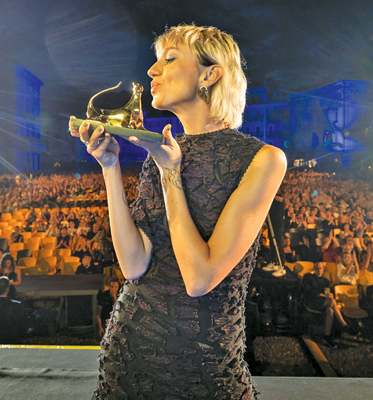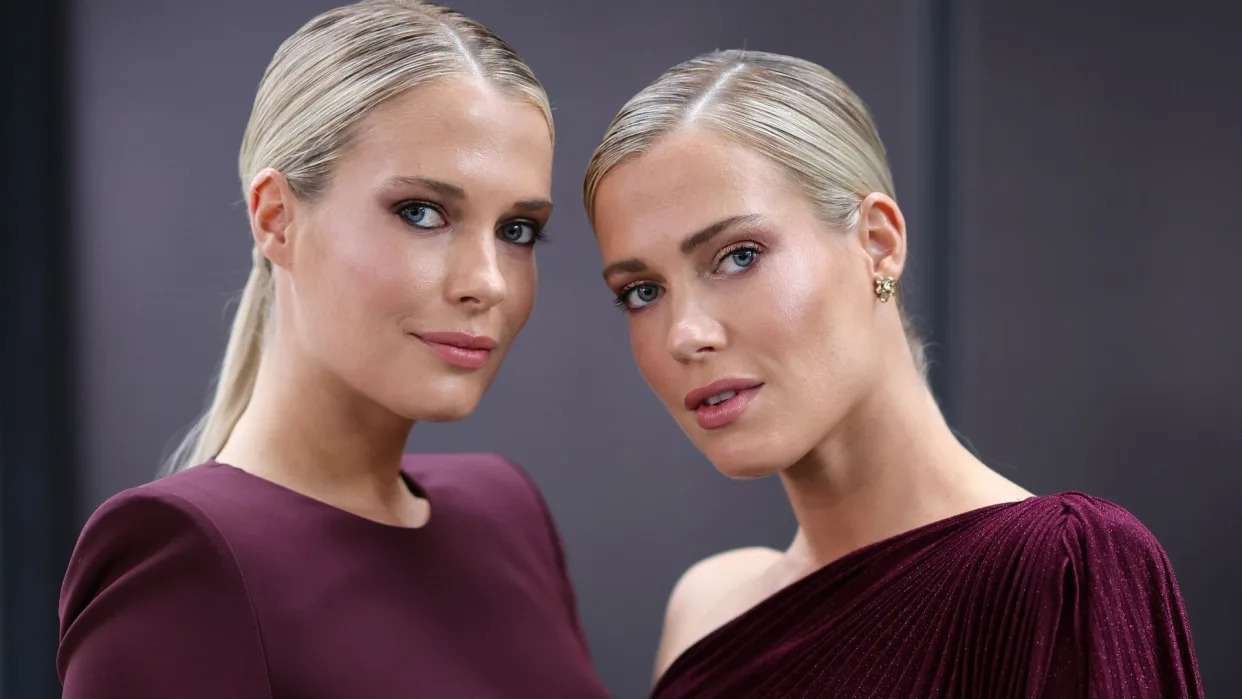The recently concluded 77th Locarno International Film Festival awarded the prestigious Pardo d’Oro to Lithuanian film director Saule Bliuvaite for her debut film, ‘Toxic.’ As an accredited member of the press, I had the opportunity to watch the film, which follows the lives of two Lithuanian teenage girls who aspire to achieve the so-called ‘perfect body’ required for admission to a mysterious modelling school that offers them a chance at a better life in a more developed part of the world amidst a collapsing industrial town in post-Soviet Lithuania. Amidst the many layers of narrative, the primary premise of the film, as I see it, is to capture the paradigm shift in human life that occurs when the industrial society collapses and transitions into a service economy in post-Soviet Lithuania.
This transformation marks a shift in economic power from masculinity to femininity, as the service and entertainment economy increasingly absorbs women into the system by creating opportunities that can only be fulfilled through femininity. It also highlights the challenges women face in transforming their bodies into the so-called “perfect body” suggested by the market economy. Setting the scene The film is primarily set in a bleak, industrial, lower-middle-class urban environment, possibly during summer vacation, as none of the teenagers in the film are attending school or studying.

Their ultimate mission throughout the film is to transform their bodies to meet the standards of the model school. Although they see it as a promising modelling school, its outward appearance is that of another temporary building with very little space and fewer facilities, which clearly raises doubts about its capabilities. The characters in the film rarely carry mobile phones, and there are no signs of social media.
Initially, this led me to believe that the director had set the social backdrop in the early 1990s, post-Soviet Lithuania, possibly reflecting her own teenage years. However, during an interview with her, she explained that although she captured the present time in the film, the area in Lithuania where she spent her teenage years has not changed much. The same hopeless people, hopeless youth, and collapsing industrial areas have persisted for decades since the collapse of the Soviet Union.
Exploring the Protagonists Soule Bliuvaite with Pardo d’Or award at the 77 Locarno International Film Festival One of the main protagonists, Marija (Vesta Matulytė), is tall and skinny, appearing attractive but often facing humiliation due to her noticeable limp. Abandoned by her mother and with no trace of her father, she lives with her grandmother and spends her days worrying about her bandy legs while gazing at and fantasising about a model poster of someone who had the chance to model overseas, where there is a high demand for teenage girls. Her friend Kristina (Ieva Rupeikaitė) has an anxious and sad demeanour, is shorter in stature, and is often found hanging from steel bars, which is an exercise she does to try to get taller, or playing basketball.
Her main aspiration is to grow a few more inches and lose more weight. Both girls come from broken families, and the film explores their self-destructive behaviours as they strive to conform to societal beauty standards imposed by the market economy, all in hopes of escaping their chaotic lives and embracing the better future it promises. Destructive aspirations The two main protagonists, Marija and her friend Kristina, spend their time roaming around and making plans to earn money to buy a parasite pill that will help to lose weight, as well as to pay for a photoshoot to submit to the model school, which costs them a fortune, while vomiting as soon as they eat and eating cotton to suppress their appetite.
In pursuit of this, they once robbed gold from their own house, and Kristina visits wealthy homes as a masseur, although Maria feels reluctant at the last minute. They party and casually hook up with their male friends, but no one has serious intentions, attention, or attraction for one another, even though they are all in their puberty years. Instead, the girls are focused on their bodies to conform to beauty standards, while the boys are intent on selling parasite pills and are addicted to drugs all day long.
A feminine perspective Saule skillfully creates and maintains a naive, teenage female perspective throughout the film. The protagonists are extremely introverted around their parents, who remain unaware of the anxiety and trauma they experience in their struggle to find their identity—a universal phenomenon. Saule’s skillful directorial debut captures this experience effectively.
The visual craft of the film is highly meaningful, as it creates a sense of a bleak industrial landscape characterised by pale and distorted visuals, interspersed with deep greenery that symbolises the deserted and anxious yet hopeful inner struggle of two young girls seeking self-acceptance against societal standards that favor the market over humanity. Reflections on uprising service economy Although ‘Toxic’ may seem like another example of the cookie-cutter mold of pessimism that has become prevalent at film festivals over the past few decades, Saule offers a refreshing feminine perspective on the decline of industrialisation amidst the collapse of the Soviet Union, which was followed by the rise of a service-driven economy in the early 1990s. In this shift, men in society have become more vulnerable due to fewer job opportunities and reduced economic involvement, as demonstrated in the film through Kristina’s father and his jobless friends at the mechanic shop, who spend their days playing basketball and hurling insults at young girls.
Meanwhile, women have gained new hope and opportunities within the service and entertainment-driven economy, with modeling emerging as a major industry where the female body is transformed into an exhibitionist object, leading to the commercial objectification of women. With this significant transformation in the economy, women could sell their bodies, beauty, voices, and seductiveness for the first time in history within a booming consumer culture, where modelling became one of the major industries. The irony The irony of this paradigm shift is that we are no longer concerned with living for the gaze of “the other”; instead, “the other” has shifted from being human to becoming a representation of consumerist society.
This is clearly evident in the film, as no love affairs come to the forefront; none of the girls seek the approval of boys. In fact, there are no young lovers in the vicinity. Rather, they are all preoccupied with projecting themselves to meet the standards set by consumer society.
Juxtaposition ‘Toxic’ reminds me of the film Guide to Recognising Your Saints (2006) by Dito Montiel, which has a similar premise of self-discovery through navigating the detrimental challenges of adolescence and transitioning into adulthood. The main protagonist in that film is named Dito, and it is presented from a male perspective. The director said in interviews that the film reflects his younger self, and similarly, in her interview with me, Soule said that while making ‘Toxic,’ she related to Marija from her teenage years.
The similarities, as well as the uniqueness of both films, lie in the ability of the directors to portray the male and female versions of the same narrative. To sum up, although the word “toxic” is often misused to describe non-agreeable human nature or differences in human subjectivity—frequently interpreted as negativity in relationships—this reflects a global phenomenon of homogenising human thought, making it easier to manipulate within the market economy. In this context, the title of the film “Toxic” is particularly fitting, as it highlights the true toxicity of the market economy, which devours human innocence and compels individuals to make detrimental choices.
As the 77th Locarno Film Festival wound up last Saturday, showcasing and awarding many refreshing films with thought-provoking perspectives from around the world, ‘Toxic’ is indeed one of those cinematic experiences. The festival deserves appreciation for discovering true gems like Soule Bliuvaite and for encouraging young talent globally..



















